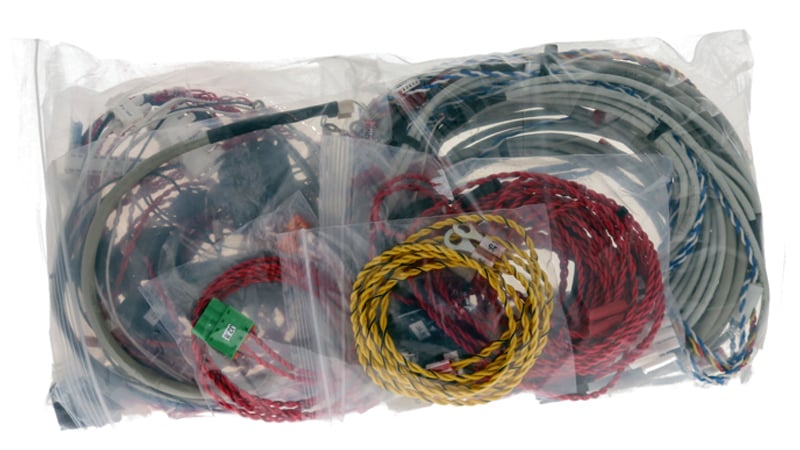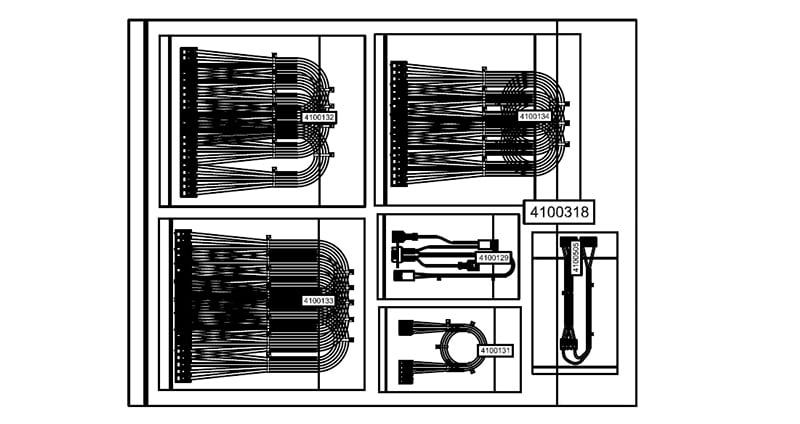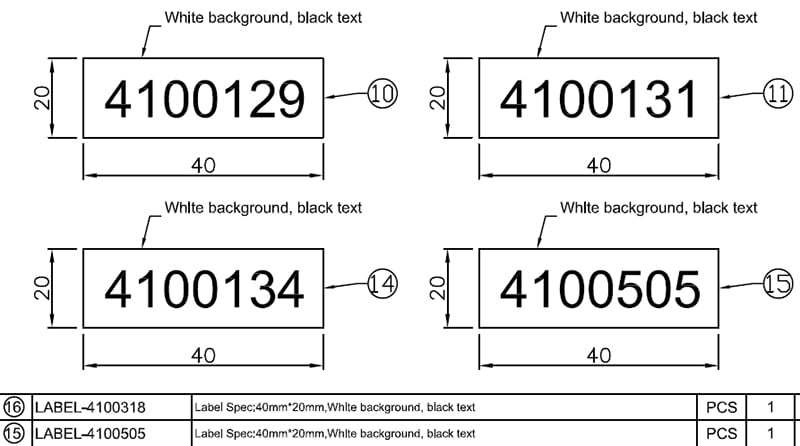In today's fast-paced engineering world, efficiency and productivity are key factors in meeting project deadlines and maintaining a competitive edge. One practice that has gained popularity among engineers is buying kitted wire harnesses. By bundling together pre-assembled wire harnesses, kitting offers a range of advantages that can simplify the wiring process.
In this blog post we explore the benefits of buying kitted wire harnesses.
Kitted Wires
Ordering kitted wires offers numerous advantages in various engineering applications. A kit, consisting of pre-assembled wire harnesses, provides a streamlined solution that simplifies the process of electrical and electronic installations.
By leveraging kitted wires, engineers can enjoy enhanced efficiency, reduced labor costs, and improved product quality. These pre-arranged bundles of wires, connectors, and associated components eliminate the need for time-consuming and error-prone manual assembly, ensuring consistent and reliable connections.

Kitted pre-assembled wire harnesses, bagged and labeled.
Additionally, kitted wires promote easier troubleshooting and maintenance, thanks to their organized and labeled structure. With their potential to save time, reduce errors, and optimize overall project outcomes, ordering kitted wires emerges as a valuable approach for engineers seeking to optimize their wiring processes.
Kitting
The term "kitting" refers to the process of assembling or packaging various components or materials into a single kit or package. In the context of wiring, kitting involves grouping together all the necessary wires, connectors, terminals, and other associated components into a pre-arranged bundle or labeled bag. Kitting eliminates the need for engineers or technicians to gather individual parts and ensures that all the required elements are conveniently organized and available in a single package.
Advantages of Kitted Wires
One of the primary advantages of kitting wire harnesses is the reduction in final assembly labor. Traditional wire harness assembly requires technicians to individually select and organize wires, connectors, and terminals, which can be a time-consuming task. Kitting eliminates this manual labor by providing pre-assembled wire harnesses that are ready for installation. This streamlines the assembly process and allows engineers to focus on the installation itself rather than spending valuable time on component selection and assembly. Most importantly, it avoids having to deal with the numerous crimp tools and extraction tools that are needed.
Another benefit of kitting wire harnesses is the ability to leverage economies of scale. By ordering wire harnesses in bulk quantities, companies can take advantage of volume discounts and lower unit costs. This is particularly advantageous for large-scale projects where multiple wire harnesses are required. Ordering in bulk not only reduces the overall cost per unit but also minimizes the procurement process, as companies can obtain a significant number of wire harnesses in a single order. This streamlined approach saves time, reduces administrative tasks, and contributes to overall cost savings.

Defining the kits on engineering drawings helps complete the documentation efforts.
Ideal Types of Wires and Harnesses for Kitted Wires
When it comes to kitting wire harnesses, certain types of wires and harnesses lend themselves particularly well to this practice. Here are a few examples of wire types and harness configurations that are ideal for kitting:
Bagged and Tagged Wires
To further enhance organization and identification, wires can be individually placed in plastic bags with identification labels. This method, known as "bagging and tagging," ensures that each wire is easily distinguishable and protected. Installers can quickly locate the required wires within the kit, reducing the risk of confusion or misplacement during the installation process.
Simple Hook-up Wires
Any UL wire type can be cut to length and kitted in a bag with various colors and lengths. The wire ends can be tinned per customer specifications or crimped with a ring or spade terminal. For projects with DIN rail or groups of grounding wires, dozens of wires can be bagged and available for installation.
High-Volume or Repetitive Wire Harnesses
Wire harnesses that are frequently used or required in large quantities are well-suited for kitting. These harnesses often involve similar configurations, consisting of multiple wires, connectors, and terminals. By creating kits for these high-volume or repetitive wire harnesses, engineers can take advantage of economies of scale, streamline the assembly process, and ensure consistent quality across all the harnesses.
Commonly Paired Cable Sets
Most devices need power and data to operate, consider pairing a 5-15P power cable with an HDMI or RJ45 cable as a complete kit. These two items can be produced in volumes and arrive bagged and tagged with all appropriate labeling. Other common cable types that are appropriate for kitting include USB charging cords or shunt connectors.
Customized Kits
Different wires within a kit may require varying strip lengths depending on their specific connections. Engineers can customize each kit by providing wires with strip lengths tailored to the project's requirements. This ensures that the wires are ready for installation and minimizes the additional effort required to trim or adjust the wire lengths during the assembly process. Additionally, each individual wire within a kit can be labeled with custom information to aid in identification and installation. Custom labels can include CAGE code, wire function, connection points, or any other relevant details.

Labeling is critical for kits with multiple wire configurations.
Kitting Costs
Kitting typically takes place in dedicated assembly or manufacturing facilities. These facilities are equipped with the necessary resources, tools, and expertise to efficiently package and organize the components into kits. Kitting can be performed by in-house teams within a company or outsourced to specialized kitting service providers.
When it comes to labor costs, kitting can offer significant cost advantages. By leveraging kitting services, companies can reduce the amount of labor required for component selection, organization, and assembly. This reduction in labor directly translates to cost savings. Kitting eliminates the need for engineers or technicians to spend time on time-consuming manual tasks such as sorting, counting, and arranging components. Instead, they can focus on higher-value activities such as installation, testing, or quality control.
It's important to note that while there may be upfront costs associated with kitting, such as the procurement of pre-assembled wire harnesses or outsourcing fees, the overall cost savings in terms of reduced labor, increased productivity, and improved efficiency often outweigh these initial investments. Companies can evaluate the cost advantages by considering factors such as the volume of wire harnesses, the complexity of the project, and the availability of skilled labor within their organization.
Kitted Wires Data Requirements and Documentation
The kitting process involves several key steps. Engineers define the specifications for individual wires or harnesses and determine the components needed for each. They calculate the quantities required for the desired number of wire harnesses and create detailed documentation. The components are assembled into kits, organized, labeled, and packaged. Quality control measures are implemented throughout, and clear communication with customers ensures their expectations are met. By following this process, engineers deliver organized and accurate kits that meet customer requirements.
Accurate documentation is crucial throughout the kitting process. Engineers create detailed documentation that clearly outlines the specifications of each wire or harness, the composition of the kit, and the quantities of each component required. This documentation serves as a reference for both the kitting process and future reference during installation, troubleshooting, or maintenance.
Simplified Wire Harness Ordering
Using kitted wires offers several benefits to the customers. Kitting simplifies the ordering process for customers. Instead of individually selecting and ordering multiple components, customers can order a single part number (P/N) for the entire kit. This reduces the complexity of managing multiple part numbers and streamlines the purchasing process. Customers can easily specify their requirements, such as the desired wire specifications, quantities, and any customization needs, making it convenient and efficient to place orders.
With pre-assembled wire harnesses and organized kits, the installation becomes much simpler and faster. The wires are already properly connected, stripped, and labeled, eliminating the need for time-consuming tasks like wire cutting, stripping, and component selection. This ease of assembly saves time, reduces the chances of errors, and ensures consistent quality in the final installation.
Summary
Kitting wire harnesses offers numerous benefits to engineers and customers alike. By bundling pre-assembled wire harnesses into kits, the final assembly labor is reduced, resulting in increased efficiency and shorter project timelines. Economies of scale are leveraged through bulk orders, leading to cost savings and streamlined procurement processes.
Additionally, kitting simplifies the ordering process for customers, reduces costs, and facilitates ease of assembly, making it a valuable practice for efficient and cost-effective wiring solutions.
Key Takeaways
- Kitting streamlines assembly: Pre-assembled and organized wire harness kits reduce final assembly labor, saving time and minimizing errors compared to manual selection and assembly.
- Cost savings through economies of scale: Ordering harnesses in bulk quantities lowers unit costs, reduces procurement steps, and ensures consistent quality across projects.
- Improved organization and labeling: Bagged, tagged, and labeled kits simplify installation, troubleshooting, and maintenance by keeping wires clearly identified and easy to locate.
- Customization enhances efficiency: Engineers can define wire lengths, strip specifications, and labeling requirements in advance, ensuring that kits are tailored to specific project needs.
- Simplified ordering process: A single part number for an entire kit reduces administrative work and streamlines purchasing, making project management faster and more efficient.
















